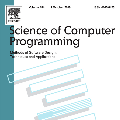Compared to natural images, medical images usually show stronger visual patterns and therefore this adds flexibility and elasticity to resource-limited clinical applications by injecting proper priors into neural networks. In this paper, we propose spatially covariant pixel-aligned classifier (SCP) to improve the computational efficiency and meantime maintain or increase accuracy for lesion segmentation. SCP relaxes the spatial invariance constraint imposed by convolutional operations and optimizes an underlying implicit function that maps image coordinates to network weights, the parameters of which are obtained along with the backbone network training and later used for generating network weights to capture spatially covariant contextual information. We demonstrate the effectiveness and efficiency of the proposed SCP using two lesion segmentation tasks from different imaging modalities: white matter hyperintensity segmentation in magnetic resonance imaging and liver tumor segmentation in contrast-enhanced abdominal computerized tomography. The network using SCP has achieved 23.8%, 64.9% and 74.7% reduction in GPU memory usage, FLOPs, and network size with similar or better accuracy for lesion segmentation.
翻译:与自然图像相比,医学图像通常显示更强的视觉模式,从而通过将适当的前科注入神经网络,为资源有限的临床应用增加灵活性和弹性。在本文件中,我们提议使用空间共变像素粘合分类器(SCP)提高计算效率,同时保持或提高腐蚀分化的准确性。SCP放松了共生操作造成的空间异变限制,优化了映像坐标与网络重量的内在隐含功能,其参数与主干网培训一起获得,后来用于生成网络重量以捕捉空间共变相背景信息。我们用不同成像模式的两个腐蚀分解任务,即磁共振成像中的白物质超常态分化和对比增强的腹膜计算机化成色的肝肿瘤分化,展示了拟议的SCP的效能和效率。使用SCP的网络实现了23.8%、64.9%和74.7%的参数在GPU记忆使用、FLOPs和网络尺寸方面减少了23.8%或更高精度。




